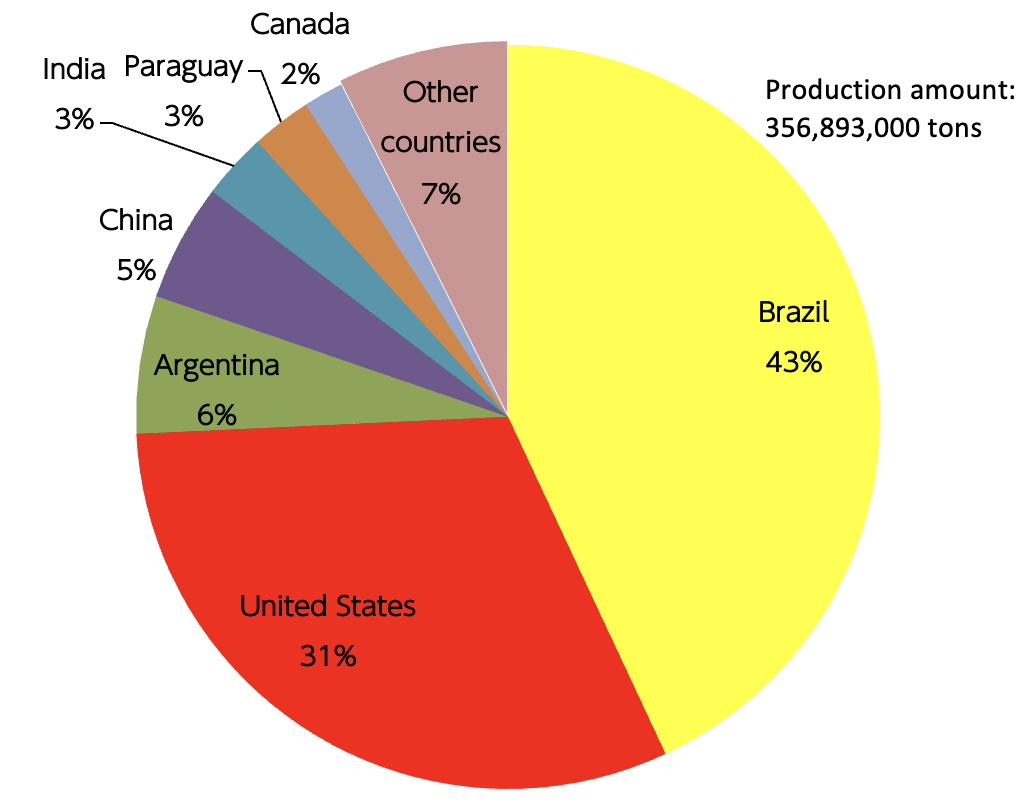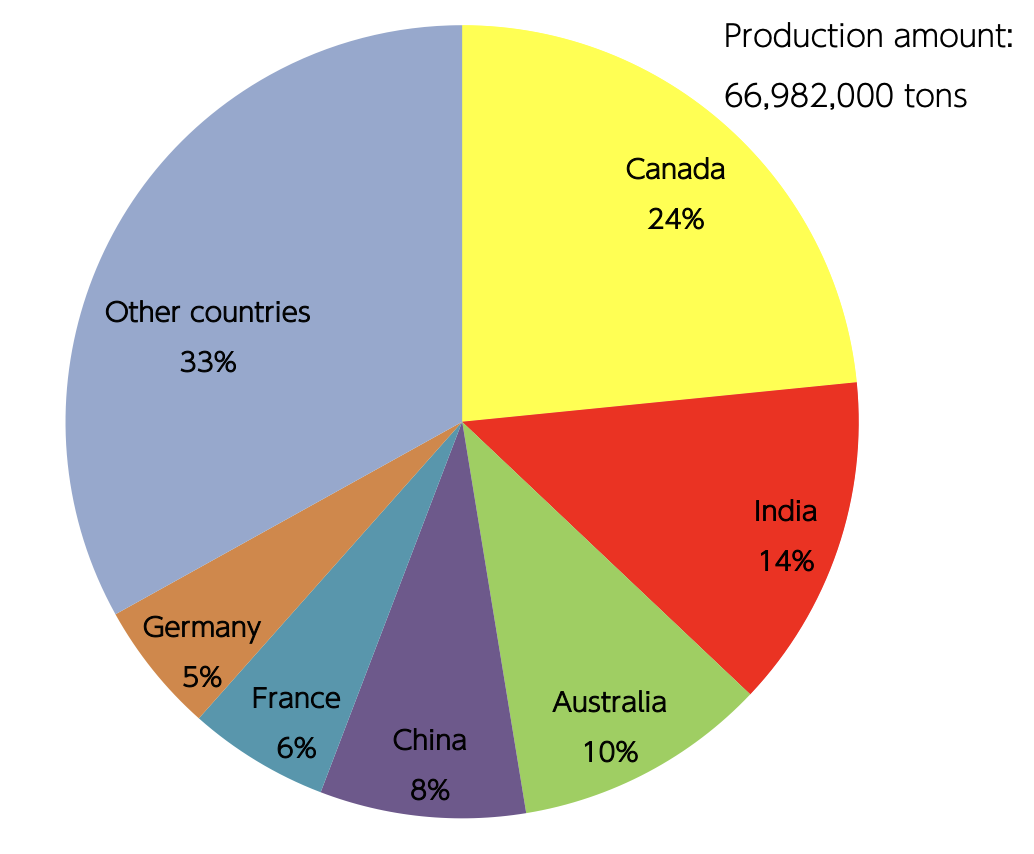Oilseeds can be produced anywhere as long as there are appropriate weather conditions. Currently, oilseeds are produced in many countries throughout the world. However, the majority of oilseeds have a low harvest rate. Therefore, in many cases, a vast area of farmland is required in order to achieve economic feasibility for farming operation. Consequently, only a few countries blessed with appropriate weather conditions and abundant land are capable of supplying large amounts of oilseeds. Conversely, sesame seeds and other oilseeds which are not appropriate for mechanized farming are only produced in developing nations and production regions are scattered throughout the world.
Soybeans and rapeseeds are typical oilseeds that are well-known in Japan. The ratio of production amount by region is shown below in Figure 2 (for detailed numbers and information on other types of oil, please refer to section "10. Reference documents (data)"). The seven countries of Brazil, the United States, Argentina, China, India, Paraguay, and Canada account for more than 90% of global soybean production (for 2022-2023; same applies below). Also, six countries including Canada, India, Australia, China, Germany, and France account for slightly less than 70% of global rapeseed production. This means that the global supply amount is significantly affected by production fluctuation caused by droughts or other conditions in these certain regions. This phenomenon is clearly shown by the global price increases which occurred in 2008, 2012 and 2021-2022.
Figure 2: Ratio of production amount by main countries producing soybeans and rapeseeds (2022-2023)
1) Soybeans

2) Rapeseeds

Source: Same as Figure 1




